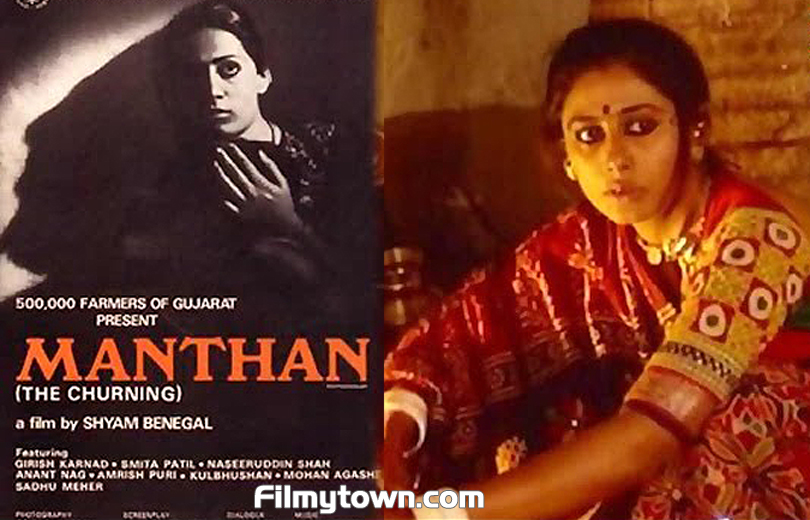A masterpiece from a master craftsman, Shyam Benegal’s Manthan is based on the life and times of the Milkman of India Verghese Kurien who brought about the White Revolution, the man responsible for the Amul story and co-operative milk farming in India on mass scale. After the Green Revolution in the sector of farm produce which made India self-sufficient in food grains, this was the next important revolution towards self-sufficiency in milk production a day-to-day need, we can thank his efforts for our daily milk which is the first thing that we require and we get it like clockwork, round the year.
It shows the coming together of people in a co-operative way. Manthan is not the story of one person but the millions of heroes who joined this revolution, painted beautifully on the celluloid by Benegal. The white revolution’s concept goes way back to pre-partition India when small milk co-operatives were formed in a few villages of Gujarat due to pragmatic approach of some people and was later turned into a revolution in 1970 with Dr Kurien’s efforts. Part of the art or parallel cinema of the time, it is a story of villagers of far-flung villages of India and the power they wield if they feel the need to come together for the greater good of the society as a whole.
Manthan is probably the first crowd-funded film of India. Manthan in Hindi has a wide range of meaning, it means churning- when one churns the milk it yields butter –a metaphor for a churning within an internal rumination and contemplation a brain storming which gives us the pure results. In fact written in co-operative efforts by of both Verghese Kurien and Vijay Tendulkar, the later went on to win the Filmfare best screenplay award for it. A rare arty film that was successful at the hustings due to the millions of co-op farmers who came to view it. It Released in India in 1976 and a few years later in other countries the world over.
Dr. Rao (Girish Karnad) visits a small village in Kheda district of Gujarat with his colleagues with an intention of starting a co-operative milk movement so that the impoverished villagers whose main occupation is cattle raising for milk can own that co-operative and can come out of the clutches of the local dairy owner Mishra (Amrish Puri) who pays them a pittance for their milk. He has to go through the usual rigmarole of the internal village politics, casteism and the general trust deficit for the Government and outsiders as a whole and also the villagers’ own lack of confidence of helping themselves. He though is helped in the cause by an extrovert village woman and single mother Bindu (Smita Patil) when he starts paying the right price of the milk and providing facilities to test the milk which is superior in quality and content.
Dr. Rao has to fight a battle on many fronts like the general mistrust between the higher and the lower class people who feel the co-operative will be the fiefdom of the higher caste leaving them with zilch, his own team members who have their own agendas and of course Mishra who will be the biggest loser if Rao’s efforts bear fruit. Slowly the people come around specially Bhola (Naseeruddin Shah) and with the help of Bindu and other like-minded villagers carries on the good work of Dr. Rao and the co-op he helped take-off when he has to hastily leave the village due to his wife’s illness and other social issues that crop up during his crusade but not before sowing the seeds of a revolution, this is the churning which brings out the best in the way people think and do things which led to a larger revolution of its kind across our great nation.
Manthan won the National Award for best Feature Film in Hindi and the Filmfare Award for best female playback by Preeti Sagar for the acclaimed ‘Mero gaam Katha parey’ which was also incorporated as the background score in the documentary and ads made for Amul. This movie was crowd funded by the half a million farmers who were members of the Gujarat Milk Maketing Federation Ltd., who paid Rs.2 each for the making of the movie and also contributed to its success. The movie was viewed in hordes all over the country by the people of the village. Benegal’s portrayal of village life is par excellence going through all the layers of the goings –on and the characters in our villages. Talking about the actors would be like showing candle to the sun, all put in super performances to make this film a piece of art to be cherished for the time to come.
– Revisited by PAWAN GUPTA



